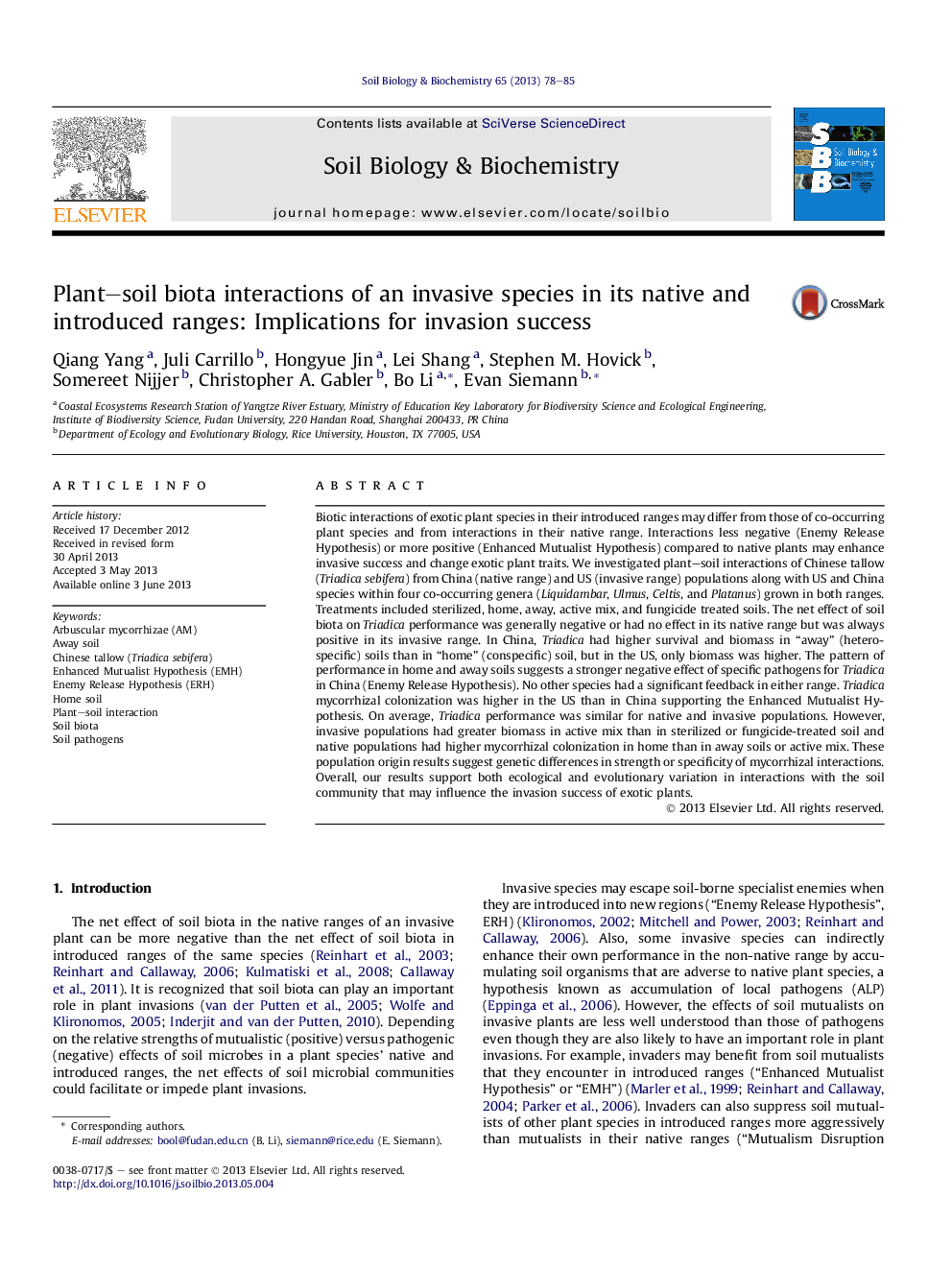| کد مقاله | کد نشریه | سال انتشار | مقاله انگلیسی | نسخه تمام متن |
|---|---|---|---|---|
| 8365200 | 1542619 | 2013 | 8 صفحه PDF | دانلود رایگان |
عنوان انگلیسی مقاله ISI
Plant-soil biota interactions of an invasive species in its native and introduced ranges: Implications for invasion success
ترجمه فارسی عنوان
تعاملات زیستی گیاهان و خاک از گونه های مهاجم در محدوده های بومی و معرفی آن: پیامدهای موفقیت آمیز
دانلود مقاله + سفارش ترجمه
دانلود مقاله ISI انگلیسی
رایگان برای ایرانیان
موضوعات مرتبط
علوم زیستی و بیوفناوری
علوم کشاورزی و بیولوژیک
دانش خاک شناسی
چکیده انگلیسی
Biotic interactions of exotic plant species in their introduced ranges may differ from those of co-occurring plant species and from interactions in their native range. Interactions less negative (Enemy Release Hypothesis) or more positive (Enhanced Mutualist Hypothesis) compared to native plants may enhance invasive success and change exotic plant traits. We investigated plant-soil interactions of Chinese tallow (Triadica sebifera) from China (native range) and US (invasive range) populations along with US and China species within four co-occurring genera (Liquidambar, Ulmus, Celtis, and Platanus) grown in both ranges. Treatments included sterilized, home, away, active mix, and fungicide treated soils. The net effect of soil biota on Triadica performance was generally negative or had no effect in its native range but was always positive in its invasive range. In China, Triadica had higher survival and biomass in “away” (heterospecific) soils than in “home” (conspecific) soil, but in the US, only biomass was higher. The pattern of performance in home and away soils suggests a stronger negative effect of specific pathogens for Triadica in China (Enemy Release Hypothesis). No other species had a significant feedback in either range. Triadica mycorrhizal colonization was higher in the US than in China supporting the Enhanced Mutualist Hypothesis. On average, Triadica performance was similar for native and invasive populations. However, invasive populations had greater biomass in active mix than in sterilized or fungicide-treated soil and native populations had higher mycorrhizal colonization in home than in away soils or active mix. These population origin results suggest genetic differences in strength or specificity of mycorrhizal interactions. Overall, our results support both ecological and evolutionary variation in interactions with the soil community that may influence the invasion success of exotic plants.
ناشر
Database: Elsevier - ScienceDirect (ساینس دایرکت)
Journal: Soil Biology and Biochemistry - Volume 65, October 2013, Pages 78-85
Journal: Soil Biology and Biochemistry - Volume 65, October 2013, Pages 78-85
نویسندگان
Qiang Yang, Juli Carrillo, Hongyue Jin, Lei Shang, Stephen M. Hovick, Somereet Nijjer, Christopher A. Gabler, Bo Li, Evan Siemann,
